This is a review of the new M&P Shield Plus, Smith & Wesson’s ultra-compact, 10+1/13+1 concealed carry pistol. This article is neither hit-piece nor glowing review. Rather it is a 100% honest, unbiased, unfiltered assessment obtained through 460 rounds and two months with this pistol. You’ll probably have to dig pretty deep to find a more detailed review of the new Shield Plus.
This article contains affiliate links.
Smith & Wesson was kind enough to loan me the pistol reviewed in this article, which I returned at the end of the review. All ammunition, range fees, etc. were at my own expense (your Patreon dollars at work!). I have no financial interest in the sale of S&W products.
Introduction
First and foremost, I am a fan of the M&P Shield. Their 2.0 variant was the first ultra-modern, plastic, striker-fired pistol that I carried for any length of time. I really like it, and I greatly enjoyed working with the long-slide Shield that I reviewed just a few weeks. I don’t review many firearms on this site, but I was very excited to try out the new M&P Shield Plus, and to have my first substantial experience with a RDO-equipped (red dot optic) pistol. This article covers my experience, in detail, with this pistol.
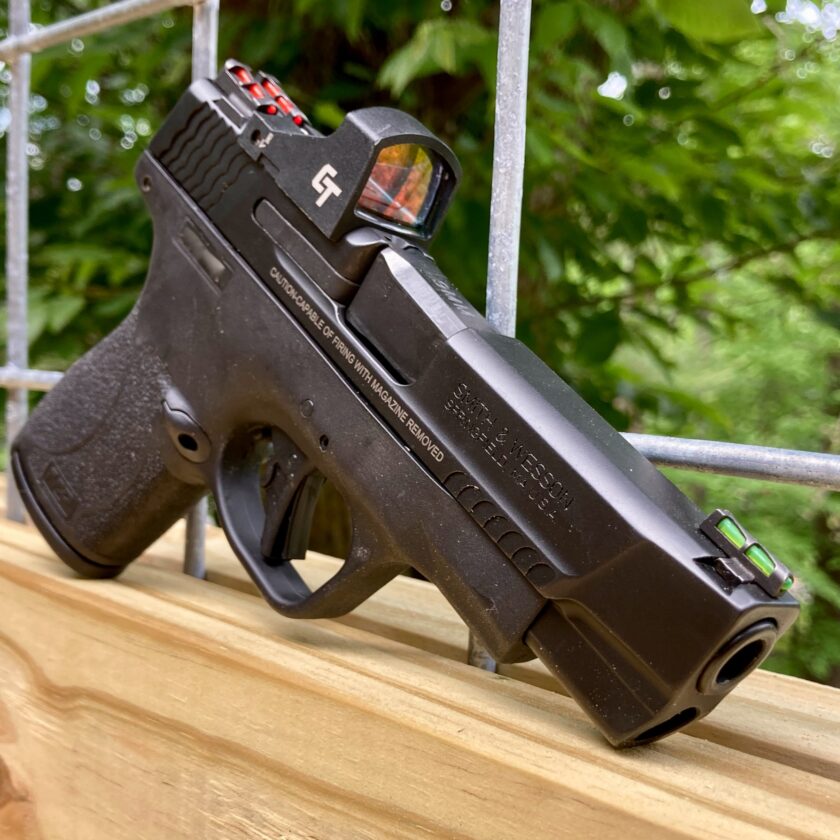
This article is broken into two sections. The first will cover the objective features of the gun. The second will be the subjective, evaluative portion of the review which is conducted using the R.E.A.P. mnemonic. My variation of “R.E.A.P.” stands for Reliability, Ergonomics, Accuracy, and Portability (rather than Power, in Seeklander’s vernacular). There’s nothing wrong with Seeklander’s version; I just have a lot more to say about carrying the gun that I do about power. It’s a 9mm – there’s not much else to talk about there.
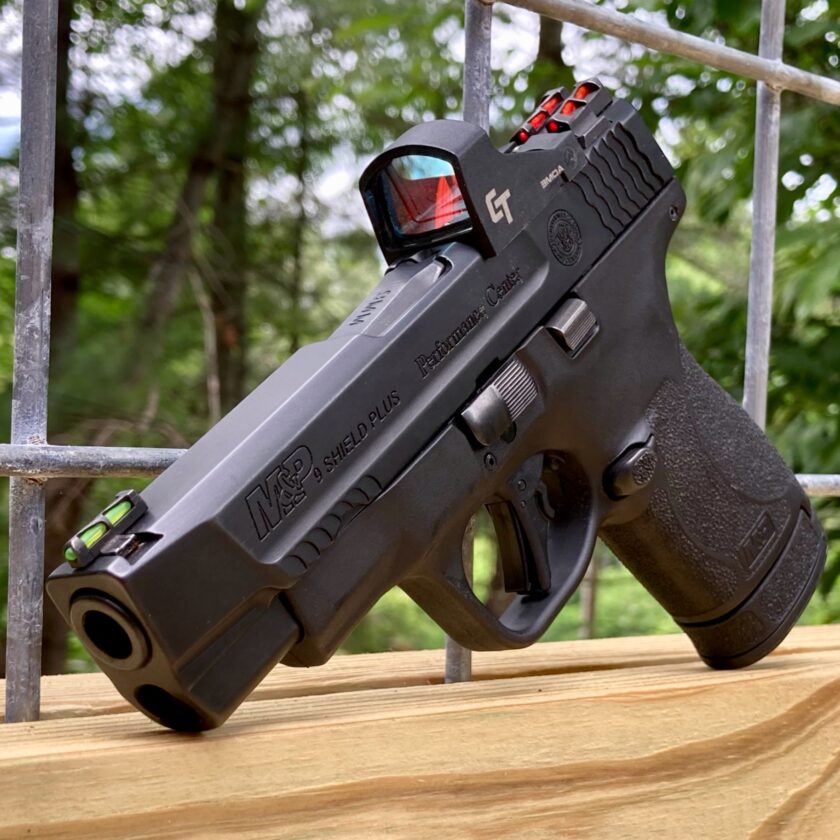
As with any pistol review, I am only one reviewer, and I was loaned only one pistol. Keep that in mind as you read this because, of course, your results may vary. I am only sharing my results with one particular sample of the Shield Plus pistol. I want to make that clear at the outset.
Section 1: M&P Shield Plus Technical Details
Section 1.1: The M&P Shield Plus
The M&P is an iconic pistol. Though it wasn’t the first ultra-compact 9mm handgun, it was the first in a line of extremely popular ones. The M&P Shield is incredibly compact, lightweight, and most importantly shoots extremely well, being both accurate and controllable. The original and 2.0-variant Shields also had a semi-staggered magazine that managed to squeeze every bit of capacity out of it’s stubby length. Smith & Wesson has recently upped the ante with the M&P Shield Plus, a Shield with essentially the same size but a substantial increase in magazine capacity.
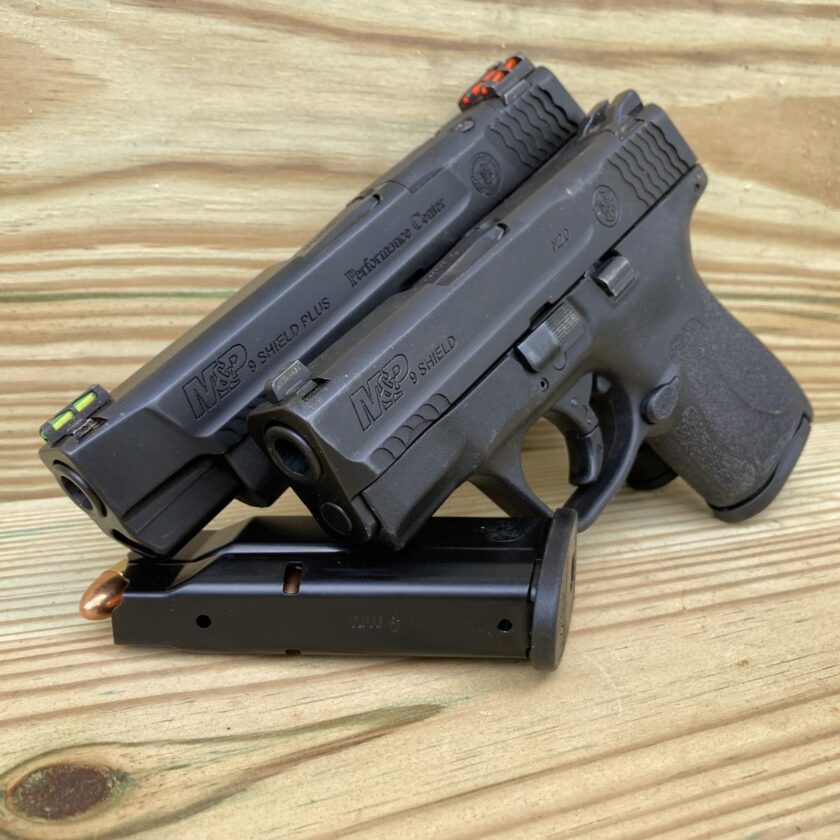
The Shield Plus – like the 2.0 Shield – is available in quite a few variations. Both are available with or without a thumb safety, and both have the option for steel, white-dot sights or night sights. Stepping up to a Performance Center model allows you some additional options. These include a longer 4″ slide, an optic-ready slide, and a ported barrel/slide. Unlike the older Shields the Shield Plus is not available in .40 S&W or .45 ACP; the M&P Shield Plus is a 9mm-only gun.
The version I chose for this review is the Performance Center version. Features included no manual safety, 4″ barrel, and optic cut. It also ships with fiber-optic sights that are peculiar to PC models. According to S&W literature the PC models also have a “PC tuned action.” The action on this one was very smooth but again, I would have a hard time differentiating between it and a 2.0-model Shield. The PC model also comes with pretty decent cleaning kit, but I don’t think that would influence me one way or the other on which pistol to buy.
Section 1.2: M&P Shield Plus Magazine Capacity
The first and most noticeable improvement is the magazine(s). Like the legacy Shield, the M&P Shield Plus comes with two magazines. Unlike the legacy Shield, the Plus model holds 10 rounds in the flush-fit magazine and 13 in the extended magazine (compared to 7+1 and 8+1). This is a pretty substantial increase in capacity and is making me consider the Shield in a whole new light. Incidentally, the magazines are also well-finished and generally seem to be of higher production value than the older Shield mags.
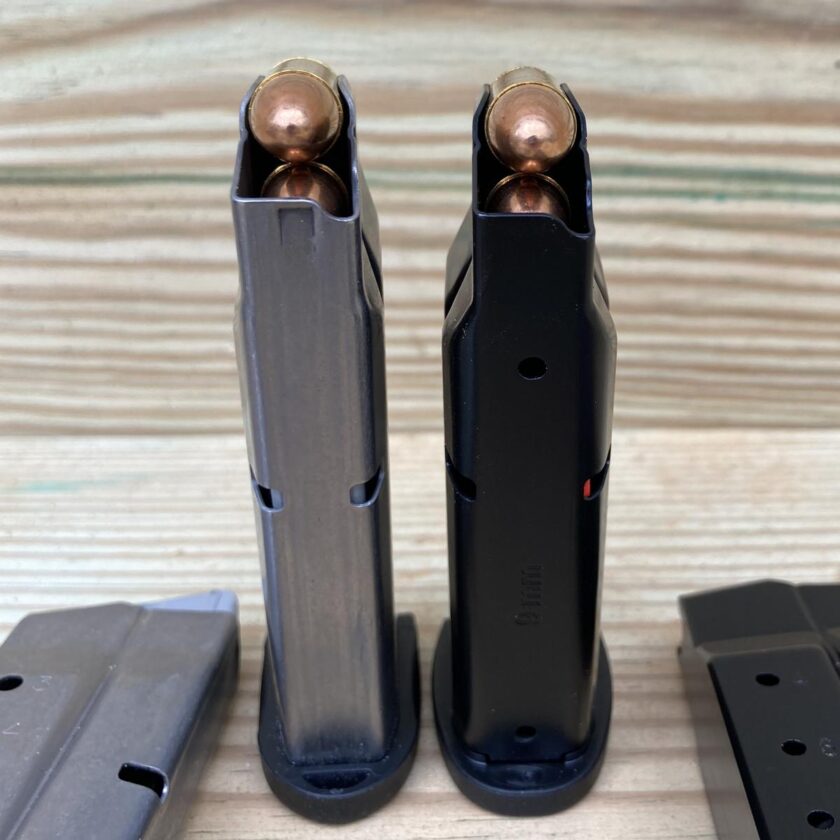
Smith & Wesson managed to make this significant increase in capacity without significantly increasing the size of the grip. The grip is ever-so-slightly larger, but not enough so that it would make any practical difference. Every other dimension of the M&P Shield Plus is identical to the standard Shield 2.0. This has a huge added benefit: holsters for older Shield 2.0 models fit the new, bigger-capacity gun. This reduces your cost if upgrading. It also means high-quality holsters are widely available if the Plus model is your entry point into the Shield market.
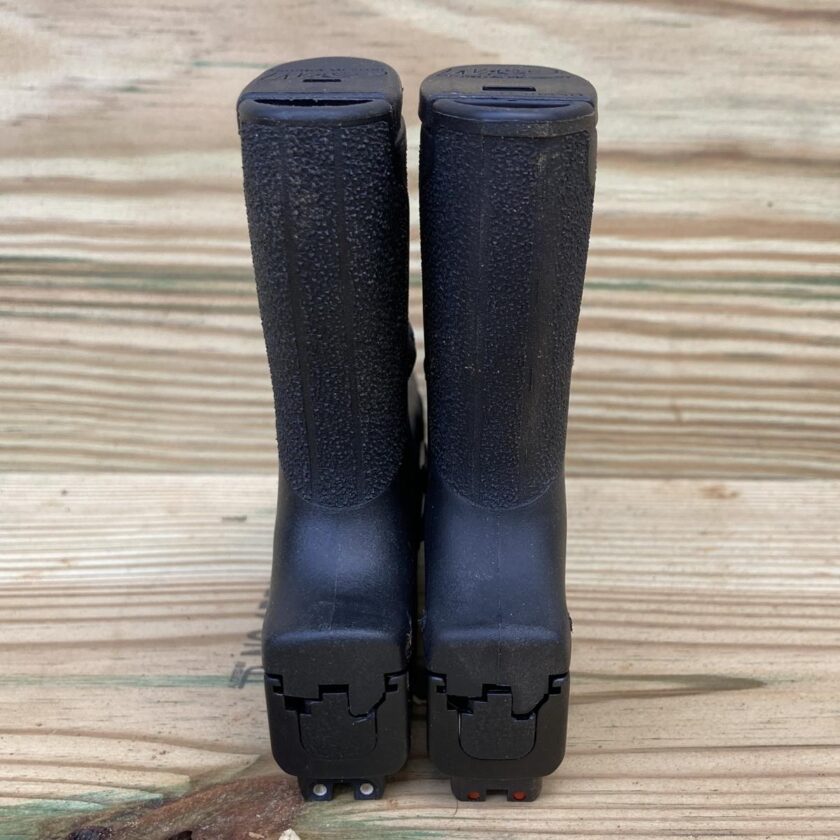
Aside from capacity there is also another improvement to the extended magazine. Both the original Shield and the 2.0 version had a friction-fit magazine sleeve on the extended magazine. The sleeve prevents the magazine from being over-inserted into the gun; over-insertion the potential to bend the ejector. Unfortunately, this sleeve also had a tendency to ride “up” the magazine. This could cause the magazine to fail to insert, or at least a failure to do it quickly. The sleeve on the Shield Plus magazine is affixed to the baseplate, preventing this issue, and I’m very glad to see this change implemented.
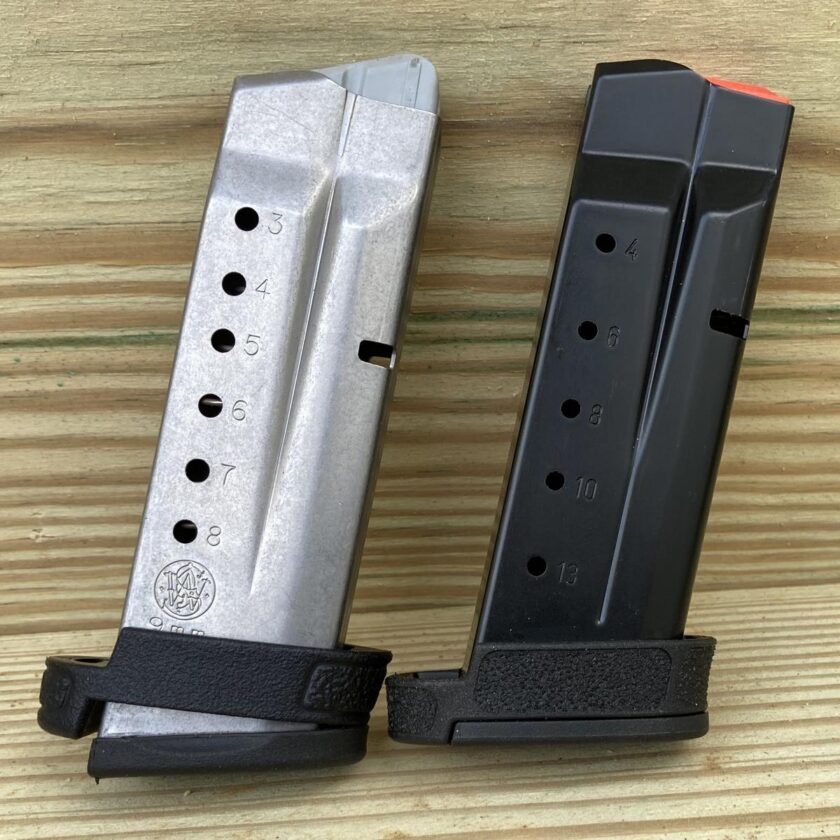
Section 1.3: Other Upgrades and Changes
The new Shield Plus also has a couple of other minor improvements. The most noticeable is the flat(ish)-faced trigger. Not only does this trigger give the gun an updated appearance, it is also a very good trigger. The travel is short, the break is crisp with just a bit of creep, and the reset is both audible and tactile, and not onerously long. Average weight for the trigger is 4.25 pounds, as measured by my Timney trigger gauge. Like I said, a very good trigger. That’s not to say that the older M&P 2.0 trigger was bad – indeed it was better than any other pistol in the M&P line – but the new Shield Plus trigger is exceptionally good.
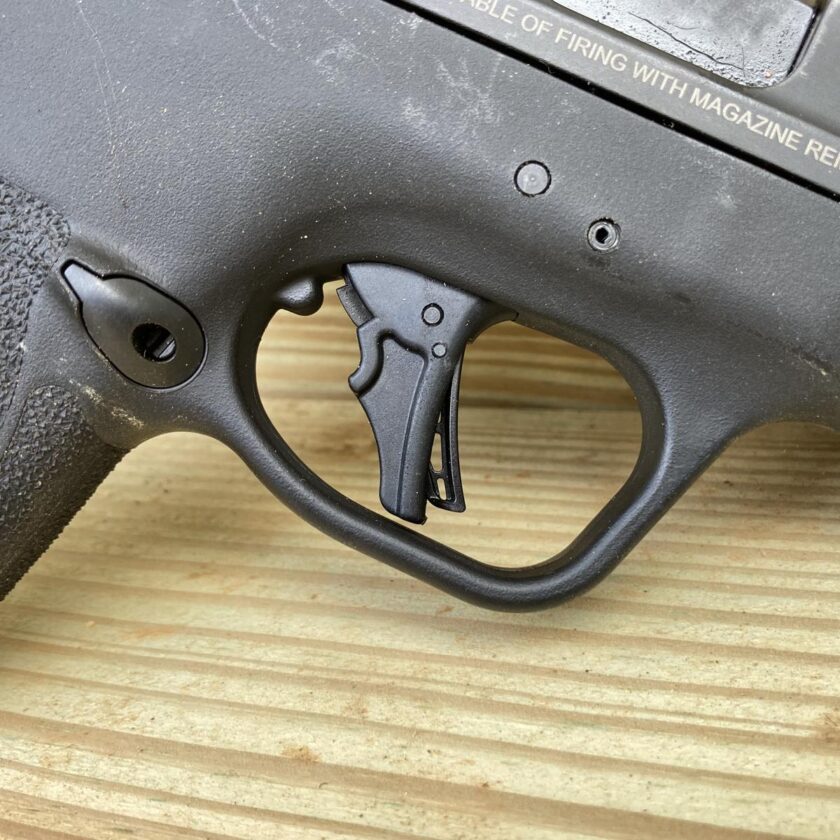
Another change is the grip texture. The first generation Shield had a fairly smooth grip. S&W perhaps over-corrected on the 2.0 line which has an incredibly sharp, sand-papery grip. The grip texture on the latest crop of Shields has been softened just a bit. It still provides plenty of purchase – in fact I’ve noticed no degradation there whatsoever – but it is intended to be more comfortable for carry. I have had no problem carrying this pistol at all, while I have had some issues with other M&P Pistols, notably the M&P9 Compact, which I’ve tried to carry and which rubs me absolutely raw.
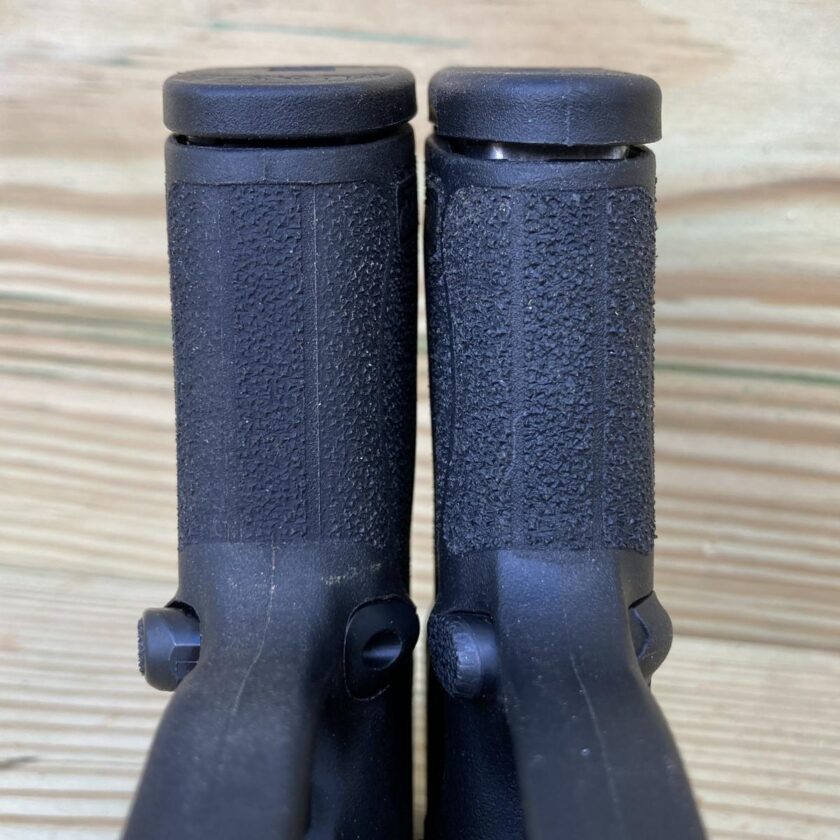
One thing I greatly appreciated – and one that is only new to me – about this particular Shield Plus were the red dot optic that co-witnessed with the sights. I suppose I’m not peculiar for my age and body of experience; I’m very used to iron sights. I still find them – even after a couple of months of work – to be faster at close range than the dot. Also (I admit, probably irrationally) I like the instant backup of irons should the optic fail, a practice I also keep with my carbines.
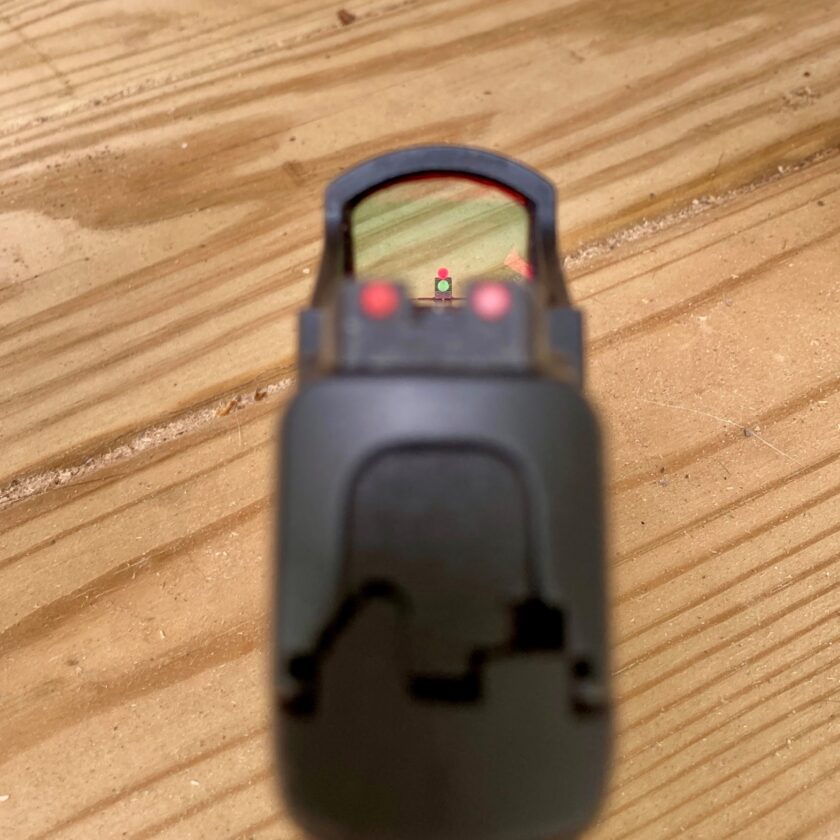
Being very unfamiliar and inexperienced with pistol optics, I’m not going to pass judgment on the Crimson Trace RDO that was included with this pistol. I’m sure there are better optics out there but at this point I have nothing at all to complain about with this one. If you’re looking for an entry into carry optics this probably isn’t a bad place to start, especially since it comes with the pistol in this case.
Not only does the Plus share holsters with previous generations of Shield pistols, it also shares sights, so if you’ve sprung for a set of Heinie Straight-8s (or whatever) for your older Shield, they should transfer right over. Again, a really thoughtful feature; good on S&W for making their new pistols backwards-compatible to the extent possible.
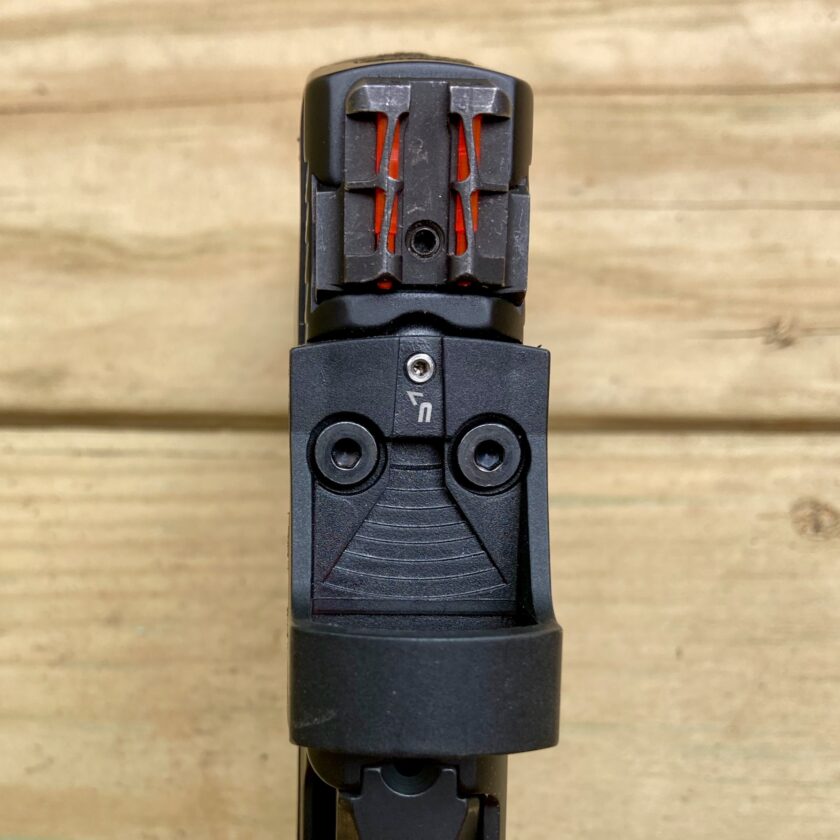
The Shield Plus MSRPs start at $553 for the basic model and go up from there. The model I tested was on the higher end at $869 MSRP. The absolute top-end Shield Plus models are the ported, optic-ready Performance Center pistols which have a price tag of $925. I’m pretty happy with that price-range; the standard pistol at $553 isn’t bad at all.
With the technical details out of the way, let’s get into my subjective evaluation of the pistol.
Section 2: R.E.A.P Evaluation
Section 2.1: Reliability
Reliability is undoubtedly the single most important criteria when choosing a defensive handgun. When the gun is called upon it must function without fail. I had a couple initial thoughts on reliability when I received the Shield Plus. The first: considering its pedigree, it should be reliable. The second: considering the brand new magazine (and magazines are so often the weak link) it might not be as reliable as the older Shield. During my time with the Shield Plus I fired exactly 460 rounds, broken out as such:
- 4/26 – 21 rounds S&B 124-grain FMJ
- 4/27 – 129 rounds S&B 124-grain FMJ
- 5/7 – 37 rounds S&B 124-grain FMJ
- 5/14 – 20 rounds S&B 124-grain FMJ
- 5/19 – 182 rounds; 174 S&B 124-grain FMJ, 8 Fed HST 124+P
- 6/1 – 71 rounds; 50 S&B 124-grain FMJ, 21 Fed HST 124+P
Now, I’m forced to walk a fine line here. I will be 100% honest with you about the reliability of this pistol and truth to tell, there were some problems. I don’t want to overstate them, though. In fact I debated posting photos of them here because again, I don’t want to overstate the issue. Here are my findings.
The first malfunction occurred on the very first round fired – not a great start to say the least. The brass failed to eject. This was while firing the “3-Seconds or Less” drill discussed below, and is why I fired 21 rounds instead of 20. I stopped and photographed the issue, then a quick “tap/rack” cleared it up. It’s impossible to say exactly what cause the malfunction; it is possible it was the fault of the ammunition – I’ve fired many thousands of rounds of S&B 124-grain ball without issue, though. Since it was the very first round I considered it a fluke and moved on.
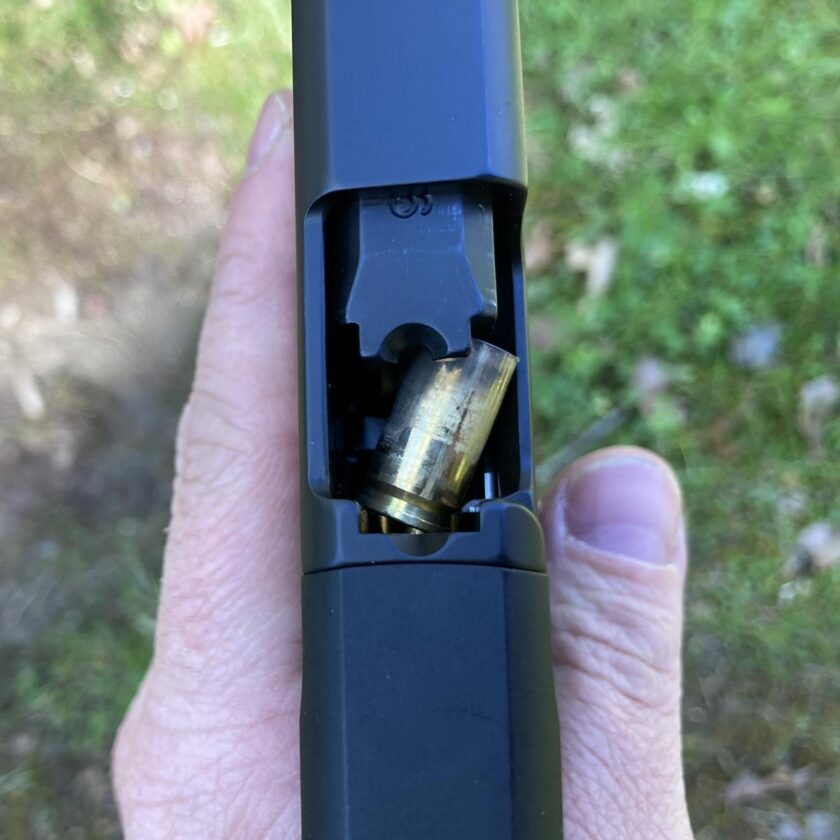
The second malfunction was somewhat worse. This malfunction occurred the first time I inserted a fully loaded 13-round magazine on a closed slide. There was a round in the chamber and I wanted to load the gun the way I would ideally load it if carrying with the longer magazine, or performing a tactical reload in the field. First, I noted that the magazine was extremely tight and it took some work to get it to seat. I really had to force the magazine to seat and pretty much knew what was going to happen. This is what happened:
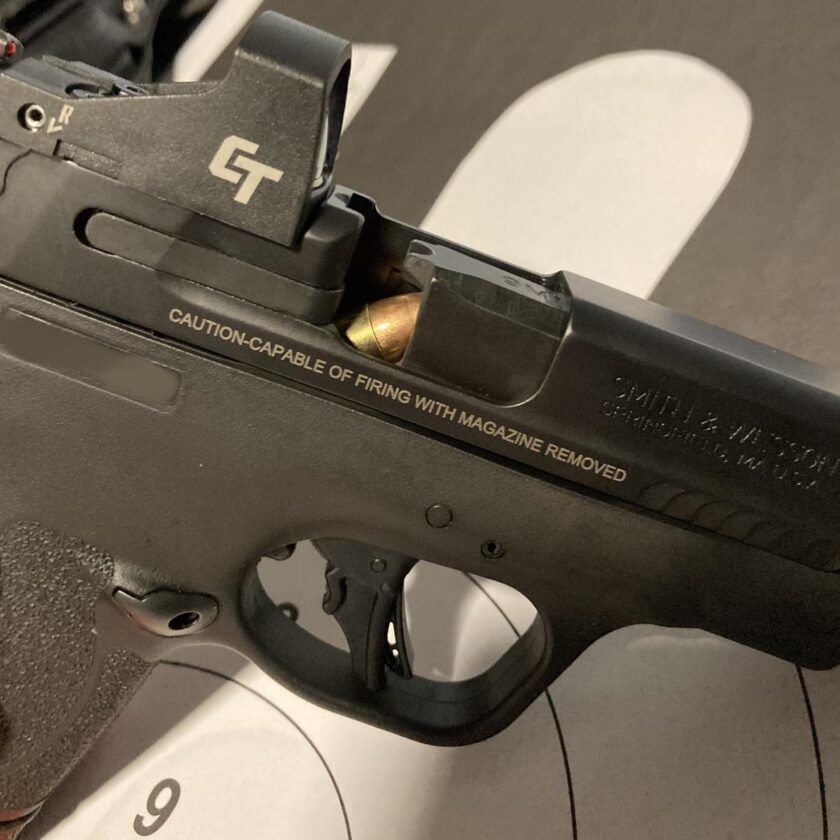
The slide failed to fully cycle and pick up the first round in the magazine. This wasn’t an easy clear. Racking the slide resulted in the classic “Type II” malfunction: a round partially in the chamber and another being pushed forward by the slide. So…pretty much a disaster. Fortunately, and the saving grace for this particular pistol, is this malfunction was easily predictable and easily preventable. On my next session I ran through about a dozen rounds, loading one in the chamber and inserting a full magazine. In this condition – full 13-round magazine inserted on a closed slide – the gun had issues. In any other condition, including a fully-loaded 10-rounder, or a 13-rounder loaded with only 12 rounds – the gun ran flawlessly and after the third or four range session I was comfortable enough to carry it.
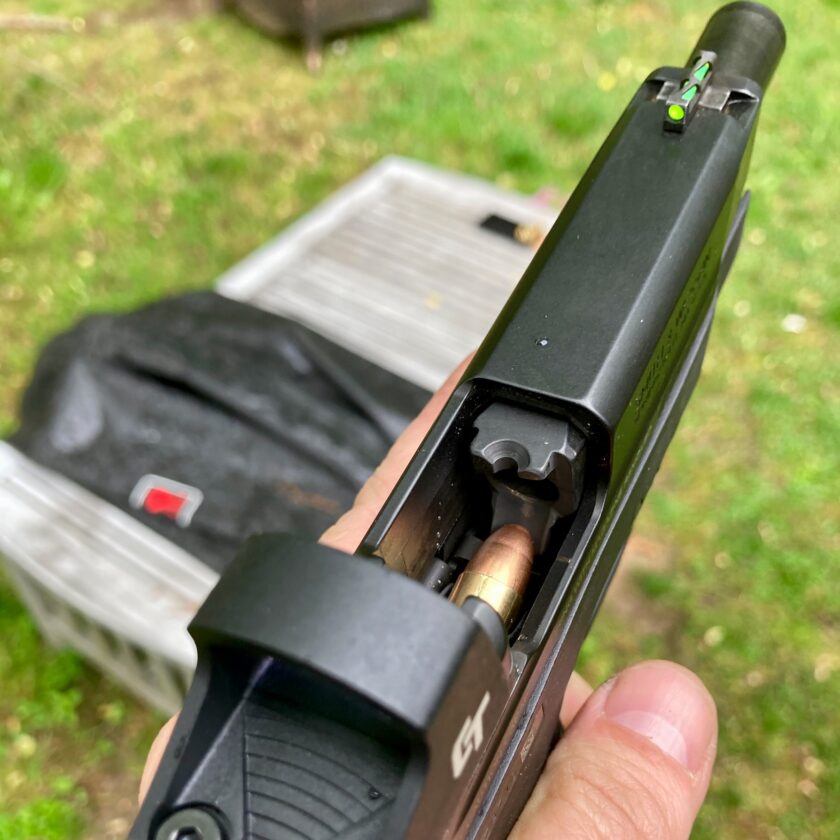
My media contact at S&W offered that this might be a “break in” issue. Frankly, I am a little uncomfortable with that explanation. Over four-hundred rounds of break-in is A LOT! The very last rounds I fired with this pistol were fired with a testing the full 13-rounder. The problem still occurred. Requiring 500 rounds of break-in before the gun can be trusted is a high bar to pass, especially considering today’s ammunition costs. Personally I feel that there are a few kinks that still need to be worked out of the Shield Plus’ magazines. I’ll discuss this more in the next section, but the difficulty of loading that 13th round definitely leaves the impression that something is amiss.
So what’s my take on reliability? This gun is reliable in any condition other than with a fully-loaded 13-round magazine inserted on a forward slide. This means, in essence, this is a 10+1 / 12+1 gun. I believe the gun will work, as long as you observe this rule. Even though that isn’t ideal, I would have no problem carrying this pistol at this point. The reason I’m OK with this is the phenomenon was predictable and could be traced directly to fully loading the 13-round magazine. It’s not ideal but it doesn’t unduly influence my opinion of the pistol’s overall reliability.
Section 2.2: Ergonomics
The M&P Shield Plus feels…well, pretty much exactly like the older M&P Shield. Which is to say, pretty damn good; the Shield is a very refined line of firearms. Most of you reading this have probably handled a Shield at some point in the past; if so you have a pretty good idea what the newer Shield Plus feels like. There is the slightly larger grip but I don’t think I would have noticed without having conducted a close examination. Also, I didn’t find the new grip texture to be terribly noticeable but then again, I didn’t have any rash on my belly either. In this case unnoticed is a good thing.
Overall ergonomics of the Shield Plus are outstanding. There are a few things – good and bad – that are worth pointing out. Let’s start with the very same grip that I’ve just praised.
This one would be difficult to notice without something to compare it against, but the Shield Plus’ grip is long – from front strap to back strap – and narrow. I don’t own a Sig P365 but – forgive me but I don’t feel a comparison is unjustified – so I rented one to shoot alongside the S&W pistol. The 365’s grip is slightly wider, but has a much shorter front-to-back dimension. This may make a difference to some users; personally I felt the wider S&W grip offered perfectly serviceable ergonomics, but overall I – having somewhat small hands – tend to prefer the grip found on the Sig pistol. Some other reviewers prefer the Shield Plus, so this boils down a personal preference issue.
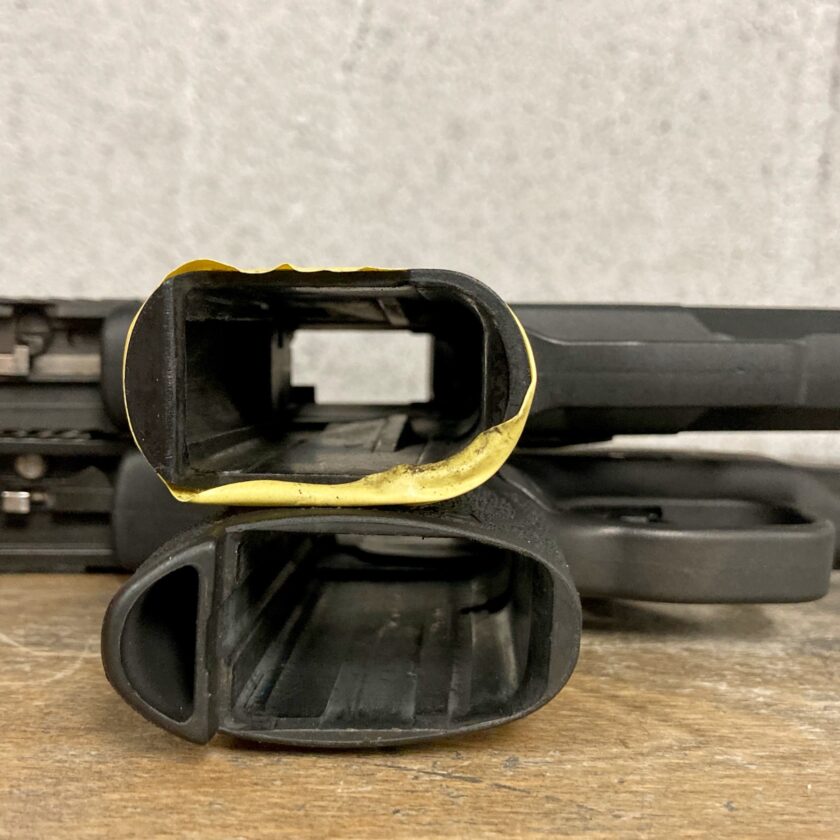
One area in which the P365 is a hands-down winner (again, apologies for the comparison but I feel the M&P Shield Plus and the Sig P365 are fishing the same pond) is the slide release. I found the Shield’s slide release button to function ONLY as a slide stop. Try as I might I couldn’t use it to release the slide. During slidelock reloads this necessitated racking the slide. Incidentally I found the RDO extremely handy for racking the slide quickly. All it took was a bump from the back of my hand to push the slide back enough to release it.
The P365’s slide release does provide enough purchase to depress the lever, even with an empty magazine in the grip. I don’t think there’s anything wrong with racking the slide, but I’d prefer to leave the option intact (and especially as a 1911 user; I am extremely comfortable using the slide release). If you prefer not to use the slide release then you can simply ignore this observation.
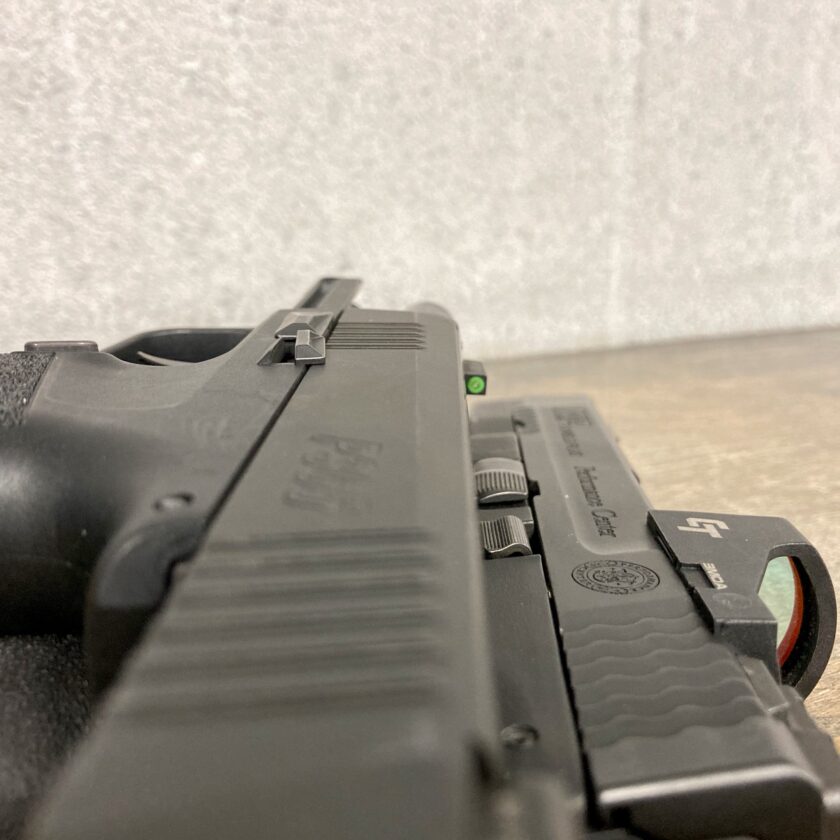
There are two factors pertaining directly to the new magazines that are worth noting. First, the narrow mouth of the magazine is a boon to swift reloading. I generally carry a 1911, whose magazine is only slightly smaller than the magazine well it fits into. This renders anything other than near-perfect technique very slow. The sharply tapered magazine of the Shield Plus is much smaller than the gun’s magazine well which is very welcome.
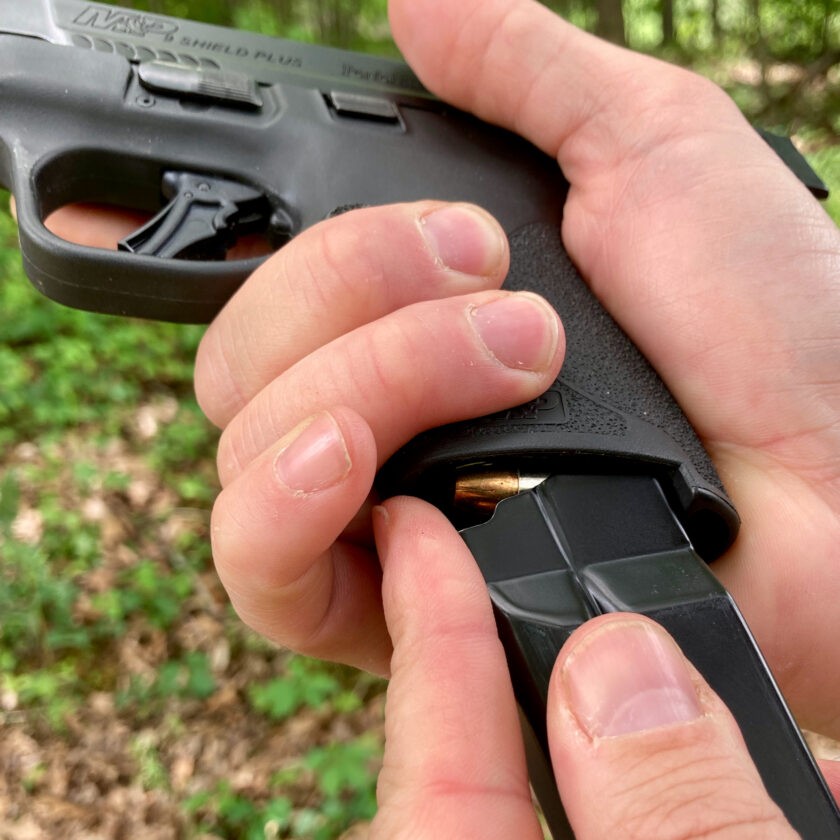
One other thing with the magazine, this one bad: I found it almost impossible to fully load. As I mentioned in the Reliability section, I cramming the 13th round into the magazine was possible but tended to cause malfunctions. Getting the magazine to seat in the gun was just as difficult as getting the 13th round in the magazine. In fact, the 12th round showed in the witness hole marked “13” so I deemed the magazine full with 12 rounds and treated it as such for most of my time with the gun. Loading 12 rounds was not difficult at all, and the magazine seated perfectly. I think there is definitely a problem, at least with the 13-round magazine I received.
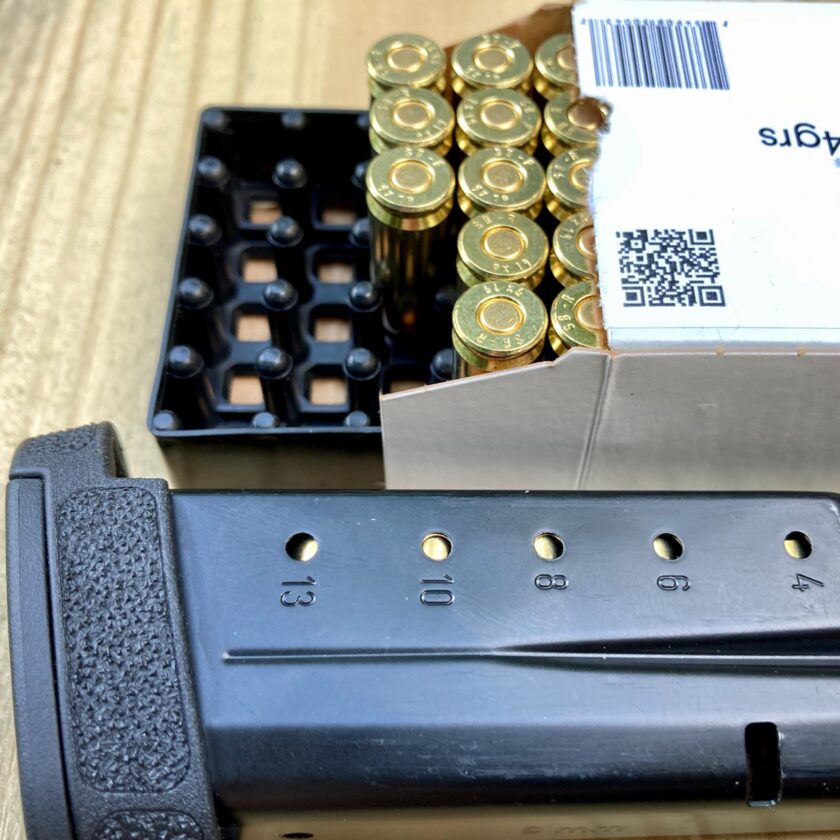
Finally, I had one issue with the newer trigger. Sometimes my trigger finger would hit it at a certain angle and bind up the trigger safety, preventing the trigger from moving. Perhaps this is peculiar to me, being used as I am to the 1911 with a short trigger. I managed to train this out of myself fairly quickly but it was a bit concerning for the first couple of weeks.
In my review of the long-slide, non-Plus Shield I mentioned the benefit of the additional slide length. The added length allows the user a bit more room to manipulate the slide. I find this to be extremely useful for press-checks (if you utilize them), and somewhat useful for racking the slide and malfunction clearance.
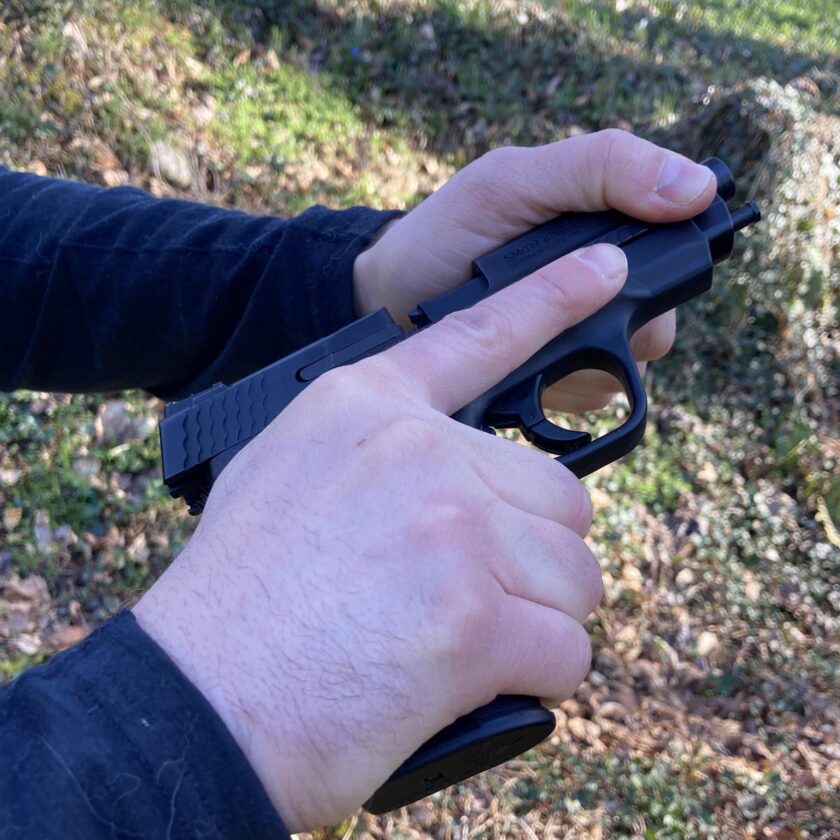
As I said, the ergonomics of the Shield Plus are nearly identical to those of the Shield. Which is to say, excellent. Let’s move on to accuracy.
Section 2.3: Accuracy
Rather than nebulously quantify accuracy with phrases like “combat accurate” and “minute-of-man” I’m going to do something a bit different in this review. The day this gun arrived at my FFL was the same day I finished Karl Rehn and John Daub’s Strategies and Standards for Defensive Handgun Training. That book (which I recommend you read, by the way) definitely got me thinking about shooting drills rather than just shooting. Combined with the ongoing shortage of ammunition I was motivated to get the most out of every single round fired out of this gun. In that spirit as many rounds as possible were fired fired in the conduct of some quantifiable drill.
I’m going to get pretty far down in the weeds explaining my results on these drills, both to let you know the effort put into evaluating this handgun, and so – hopefully – you can get some inkling of what this pistol is capable of. My results, good or bad (and some drills certainly were not up to the absolute best of my abilities), are reported here.
One other thing: you’ll notice that most of the drills I discuss here are fired on a modified target. That is because the range at which I shoot requires that patrons purchase targets from them. Occasionally I sneak in a Dot Torture or FAST Test target, but most of what I do is shot on something I’m making work.
Section 2.3.1: 3 Seconds or Less Drill, Dot Torture
The very first rounds shot in the M&P Shield Plus were spent conducting the KR Training “3 Seconds or Less” drill. Unfortunately I didn’t have the prescribed target so I made do. I shot it on a scaled-down silhouette. I considered the 9-ring the “down-zero” area of the body. For the headbox I used one of my old business cards. I shot this drill completely cold. After picking it up on a Saturday afternoon I dry practiced with it for just a few minutes, then put it in the safe. The following day (Sunday) I worked a 24-hour shift. When I got off on Monday morning I came home, worked out, pulled the gun out of the safe and holstered it. No dry practice, no nothing. Also, I hadn’t shot a live round in over three weeks, so I was truly “cold.”
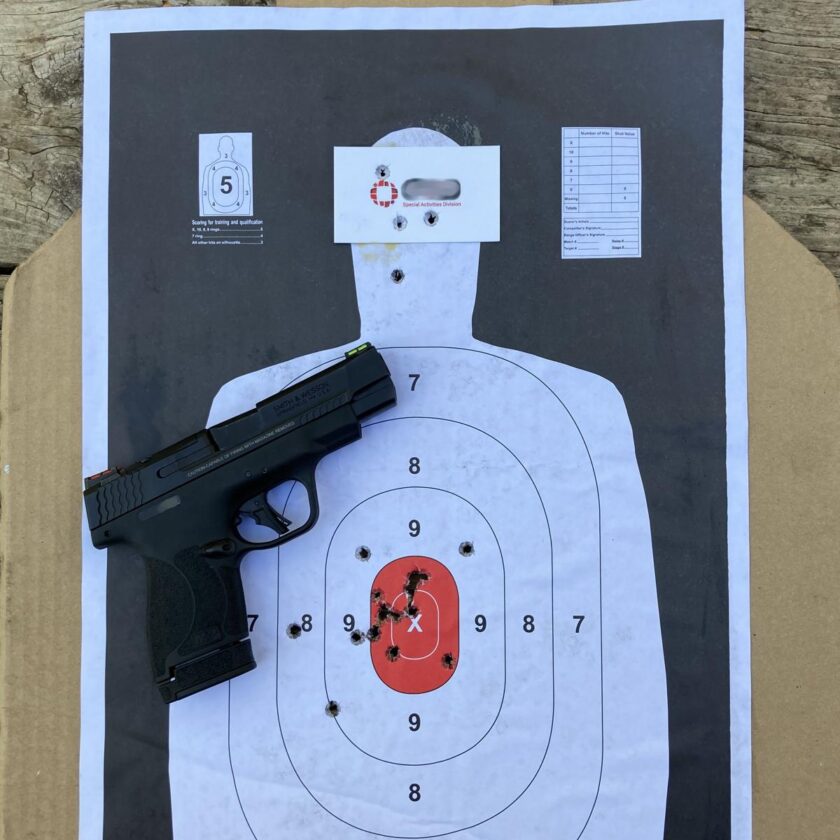
I’m reasonably happy with the results. Though the first shot resulted in a malfunction the rest of the drill went very smoothly. All shots we were within the 3-second time standard, with most hovering around 2.5 seconds. I’m going to hold myself to a fairly rigorous scoring standard here and not count the shot outside the 9-ring, or the shot breaking the 9-ring. Along with the missed head shot that puts me at a 17, or Level 2. Not bad at all, but still some room for improvement at the end of the review.
I took the gun to the range the next day and fired a few more rounds. The next fifty fired were spent on the Dot Torture drill. Rather than fire this at the prescribed 3 yards, I shot it at 5. I scored a 47 out of 50 possible; not a bad score but it certainly could have been better; the sights on this gun hit a little to the left (as I discovered in the first drill) which caused me to spend quite a bit of time thinking about compensating. With that in mind I’m happy this drill
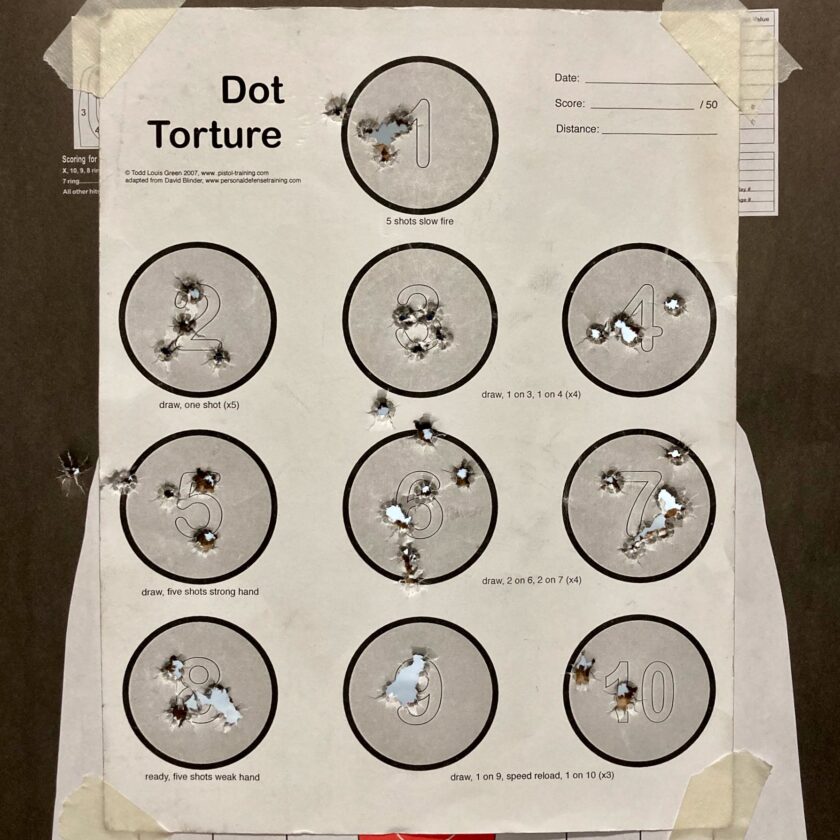
After I’d shot the Dot Torture drill I was ready to move on to mounting the included Crimson Trace 1550 red dot optic (RDO). Since I am new to the world of red-dot sights I wanted to spend the maximum amount of time possible working with the dot. This was partially for my own education and partially to see what this gun was capable of. I spent several rounds zeroing the dot. Rather than a prescribed drill I ran the target to 25 and began shooting timed, 5-shot drills. Below are the first two timed drills, fired from the low-ready.
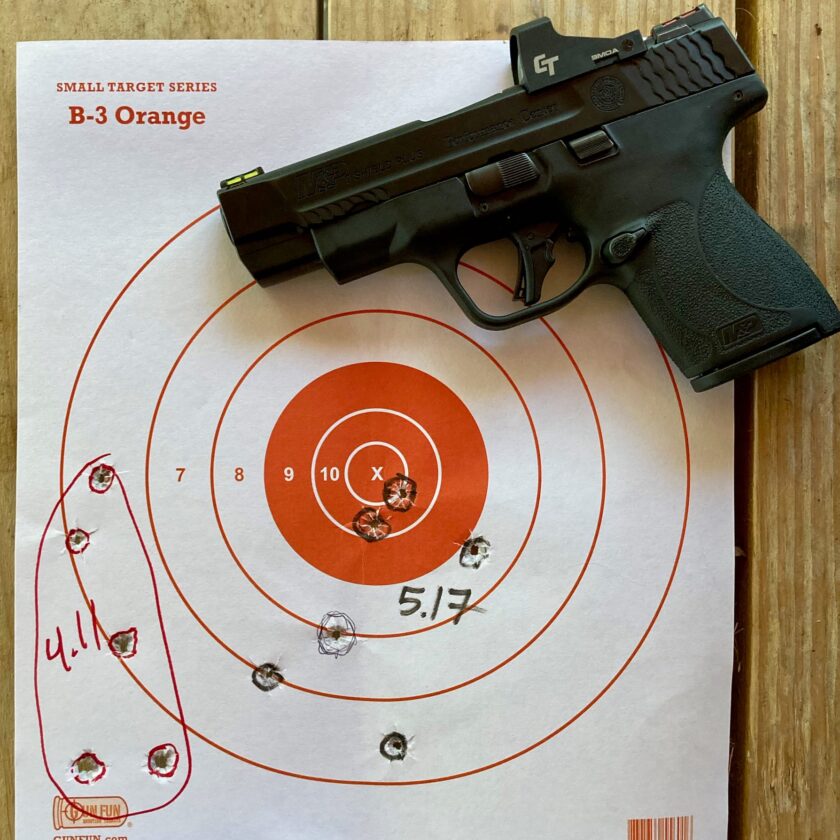
They don’t look like much on the surface, but fired at 25 yards, against the clock, groups in under six inches are pretty damn solid. And consider this: these were my first two, timed groups. You’ll notice the 4.11 group impacted low and left; I still hadn’t fully zeroed the optic at this point. The second group represents an adjustment to move POI right. My groups and times consistently got better after this. I thought it was worth showing what a user, brand-new to pistol red-dots could do. I left the optic on the pistol for the remainder of the time I possessed it.
Section 2.3.2: 5×5, The Test, FAST Test, Dot Torture
My next two sessions with the Shield Plus saw several more drills worked into the mix. The first was the 5×5 Drill (not to be confused with the Wilson 5×5 Skills Test). I fired this one standalone in my yard. This is a super easy drill to setup and run and I enjoy shooting it. With the Shield Plus and RDO I had no problem at all passing this drill from concealment, with most stages completed in under 4.25 seconds.
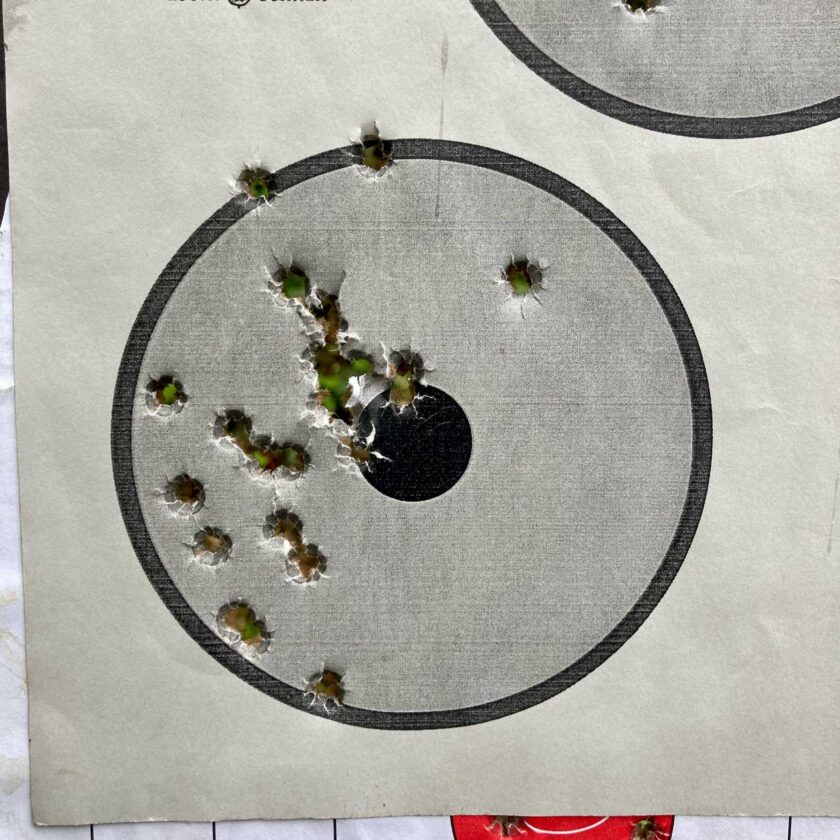
On my next range trip I fired several more formal drills: Ken Hackathorn’s “The Test,” the FAST Test, and another couple iterations of Dot Torture. Hackathorn’s “The Test” is another fairly easy drill to set up and run. It involves, simply, firing 10 rounds from 10 yards in 10 seconds. Though the conduct of this drill is simple enough I found it to be fairly challenging…until I realized the dimensions of a B-3 target are about half those of a B-8. The importance of shooting a drill on the correct target – or at least understanding the difference – is pretty important. The onerousness of having to choose from the range’s limited selection of targets is difficult to overstate.
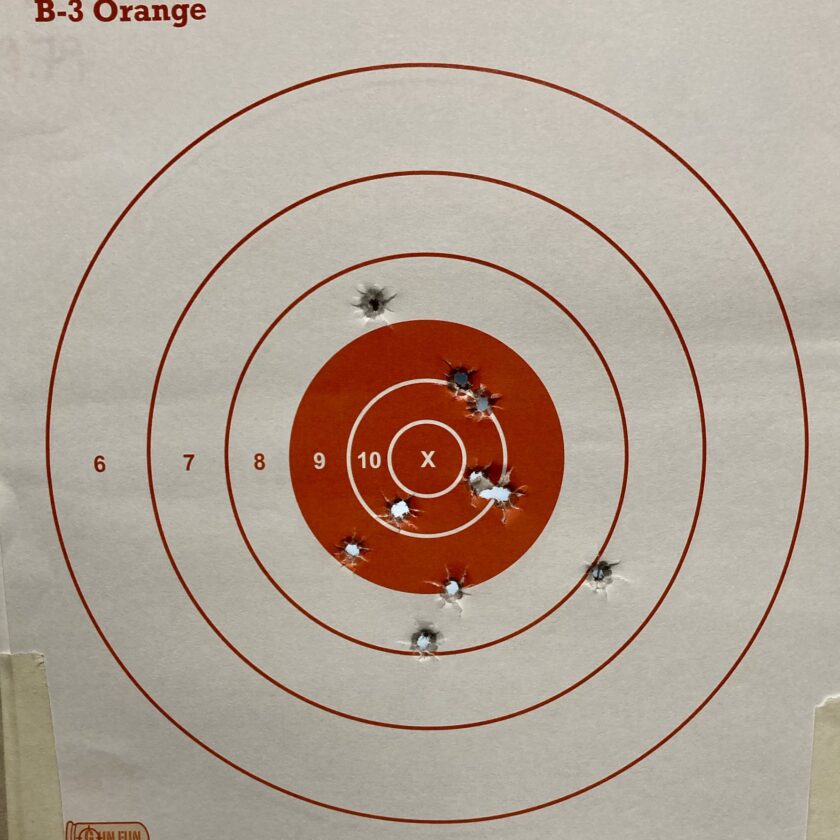
Next, I really pushed myself on the FAST Test. This test specifies firing two rounds to the box, conducting a slidelock reload, and firing four rounds to the circle. The most difficult part of this with the Shield Plus was the reload, since I lacked an appropriate magazine pouch for the thick magazine. Instead, I reloaded from a pocket which slowed me considerably. Still, most of my passing runs came in around 7 seconds.
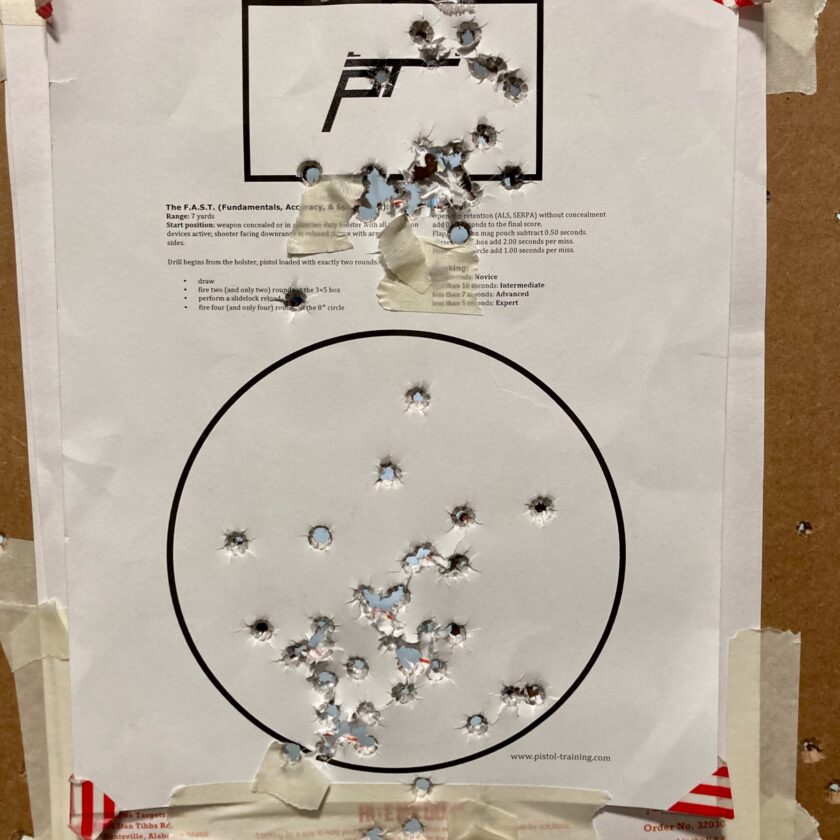
Finally, I fired two more iterations of Dot Torture, one at 7 yards, and one at 3 yards. I fired a 43 and a 47 respectively, and learned something very interesting: when shooting one-handed I had a very difficult time aiming the red dot. The dot and sights didn’t seem to agree with each other and my brain had a very difficult time deciding what to look at. I ended up with rounds way off of their intended marks. Even at three yards I had some trouble with this at the SHO stage. If and when I begin carrying a red dot, this is something that I will have to do some work on.
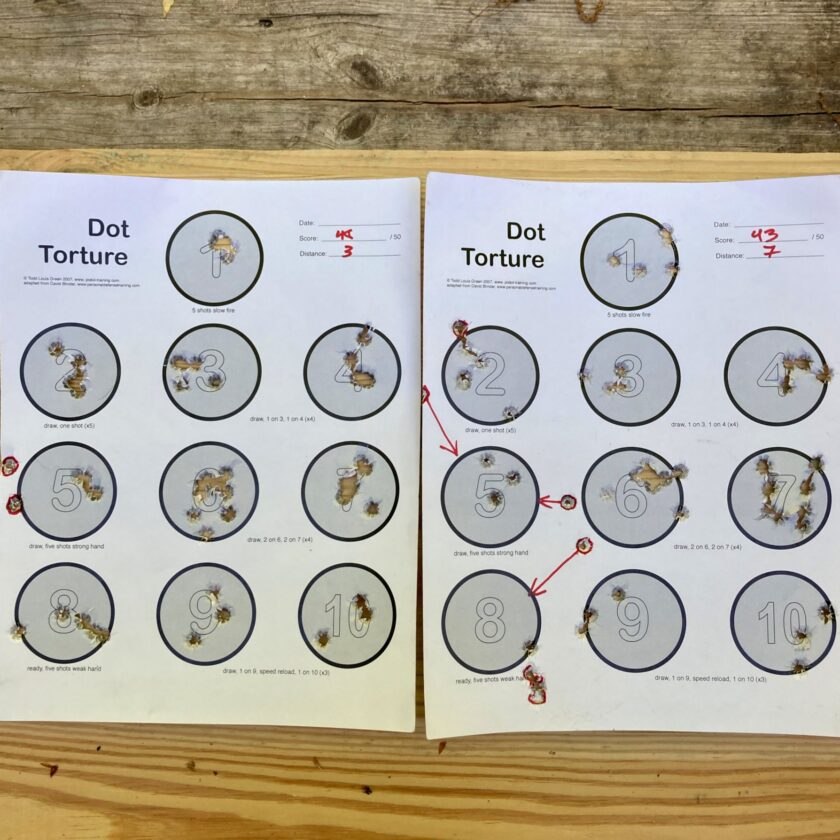
Section 2.3.3: Super Test, 5-yard Roundup
At my final range session I shot two more drills starting with the the Super Test. The “Super Test” is an extension of Hackathorn’s The Test, adding 15- and 5-yard stages. I found passing this test not terribly difficult with the Shield Plus.
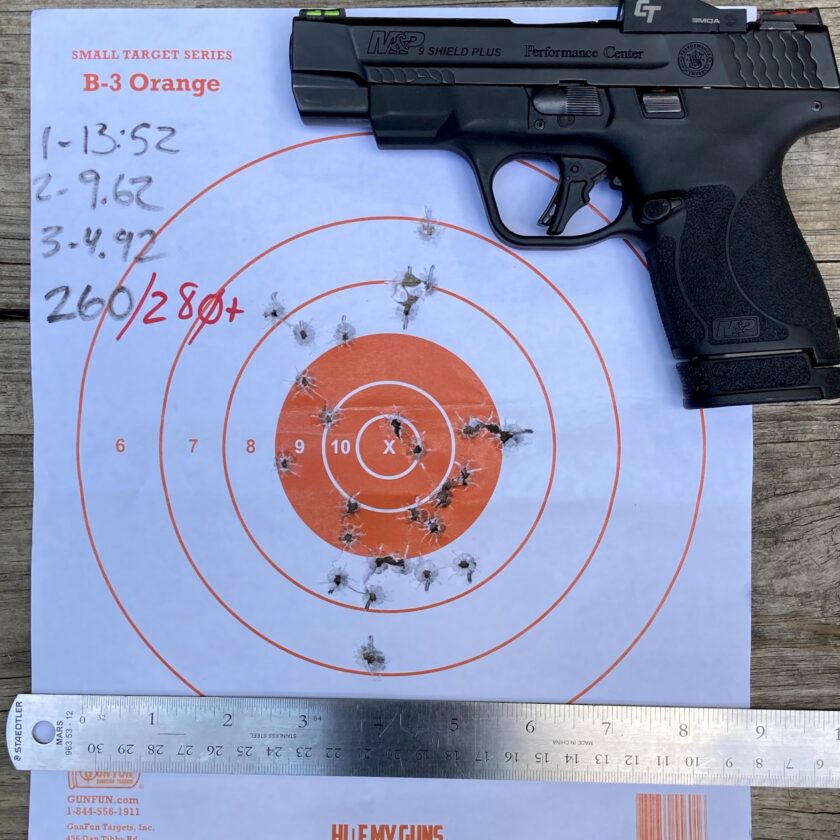
To make things a bit interesting I also fired this drill with my normal carry gun, a Nighthawk 1911. After not having fired more than three dozen rounds from this gun in the past three months, you could consider me fairly out of practice. Still, I managed to fire a better score than with the Shield Plus. This is likely the result of my deep familiarity with the 1911 rather than a knock at the Shield Plus. Take it for what it’s worth.
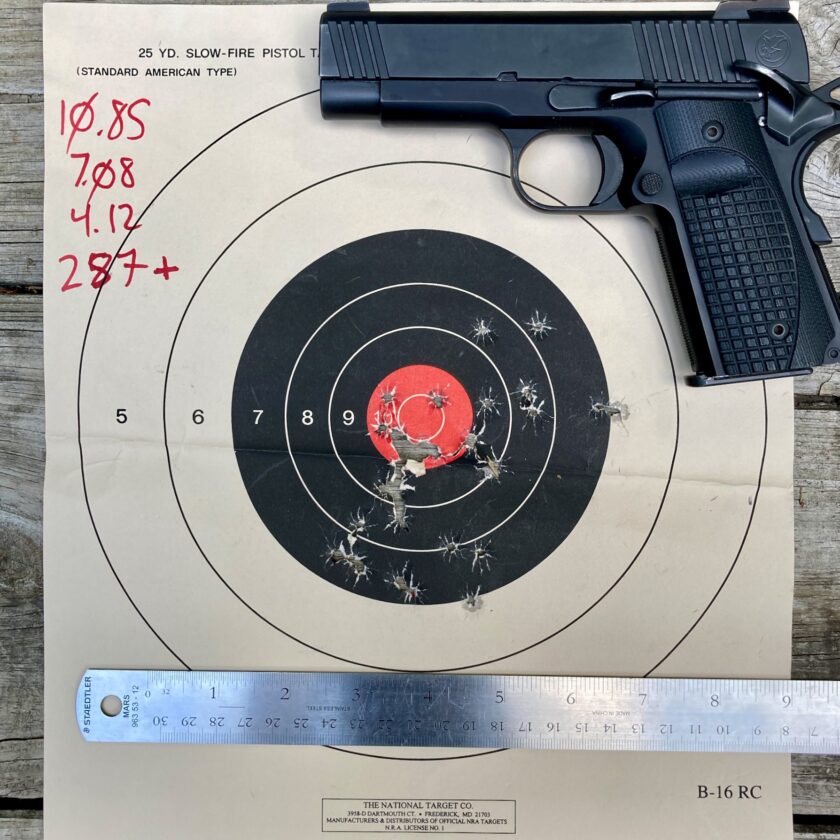
Next up was Justin Dyal’s Five Yard Roundup (I doubt Justin Dyal remembers me but he and I met a couple times in ’07/08 when I was still on active duty). This is a fun little drill with four stages, each fired in a par 2.5 seconds and all fired at 5 yards. Considering my previous issues with the RDO when firing one-handed I didn’t expect to do well on this drill, but I did. I managed to pass this drill on the very first go. Maybe forcing myself to go fast and not think about the dot/sight confusion actually worked. Whatever the case, I am pleased with my results on this drill.
Section 2.3.4: Conclusion on Accuracy
I tried my best to measure accuracy both with a measurable target and with time. You can squeeze just about any modern pistol into an Ransom Rest then agonize about the fractional differences offered by various loads. Those groups probably have very little at all to do with real-world performance. I sincerely hope this sampling of drills and tests has shed some light on what this pistol is capable of in both accuracy and speed.
My take is this: the Shield Plus is an excellent shooter. I was able to score at a decent level on the drills chosen, right out of the box. By the end of my testing I was scoring at a fairly high level with this pistol, and I have no doubt that there is still much room for improvement, given the opportunity for more training and practice. I have no reservations whatever about the accuracy (and speed and “shootability” and whatever else, pertaining to shooting well) of the Shield Plus.
Section 2.4: Portability of the Shield Plus
Confident in the gun’s ability to function and my ability to make hits with it, I wanted to carry the M&P Shield Plus. I ordered, at my own expense, a holster from JM Custom Kydex. My experience with JM Custom Kydex is fairly limited. Because my needs have been met elsewhere I’ve never been in a hurry to order any of their products. The fact that I wanted to both carry an optic, and carry a longer-than-normal, extended-slide Shield Plus narrowed my options considerably. JM Custom Kydex (from who I receive no compensation whatsoever) had a fit for this oddball: the George.
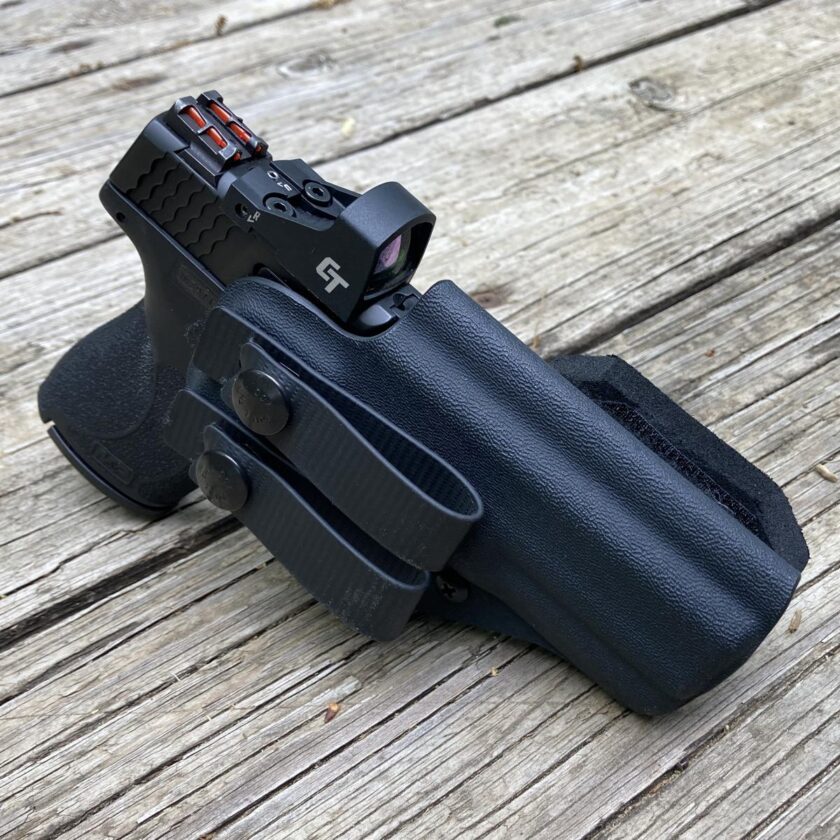
I don’t want to turn this into a holster review, but I do want to stress the impact the holster made to the carry of the M&P Shield Plus. The George turned out to be an excellent holster. In fact, it quickly became my new favorite holster. So much so that I ordered one for my 1911 within just a couple of weeks of receiving the first one. It held the gun securely, kept it in a consistent position, concealed the gun exceedingly well, and was comfortable. Even better, it didn’t cost a fortune – around $100 with shipping and upcharges for the RDO cut and pad.
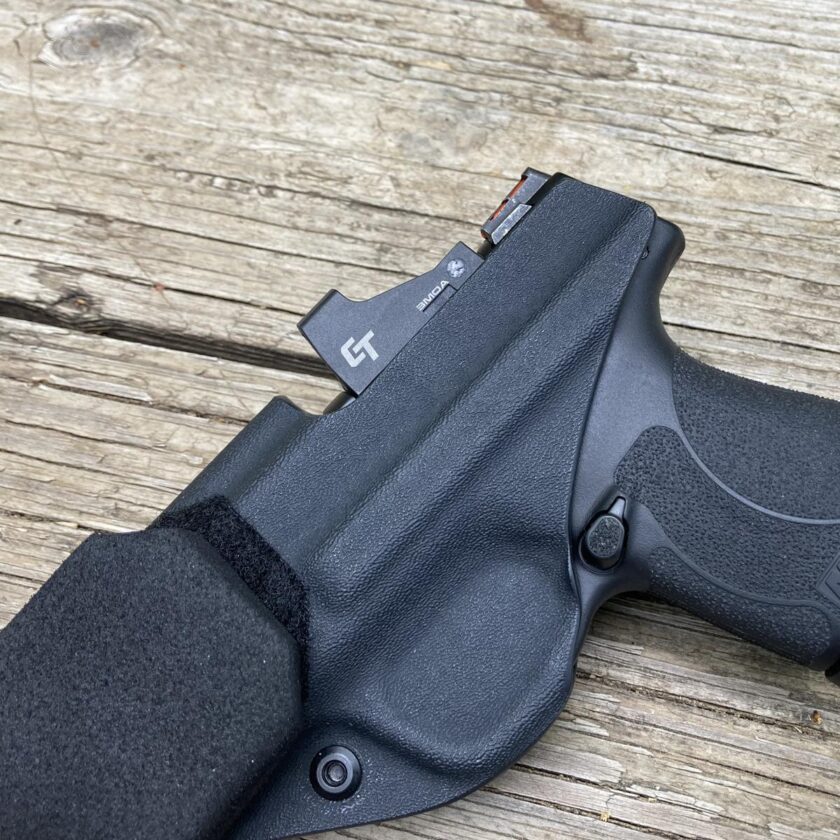
Combined with this outstanding holster, the M&P Shield Plus is a phenomenal carry gun, at least for me. The Shield Plus fits into about the ideal envelope of size and weight for my comfort. The main criteria that makes this gun so comfortable is also the one that makes the 1911 platform so attractive to me: thickness. Or maybe I should say “thinness.” The Shield Plus is a very, very thin firearm. That’s honestly not a huge surprise by itself – it’s the same thickness as the regular old Shield – but this gun is so much more than the sum of its parts.

The weight is very manageable. The pistol with RDO and empty 10-round magazine is 22.6 ounces by my scale, about an ounce and a half heavier than a Glock 19. Actual carry weight (fully loaded with 10+1, plus the JMCK holster) was 30.8 ounces, or just under two pounds. That sounds like a lot when we’re accustomed to reading manufacturer specs that reduce weight to the absolute minimum, but it’s really not bad at all for a workable carry package.
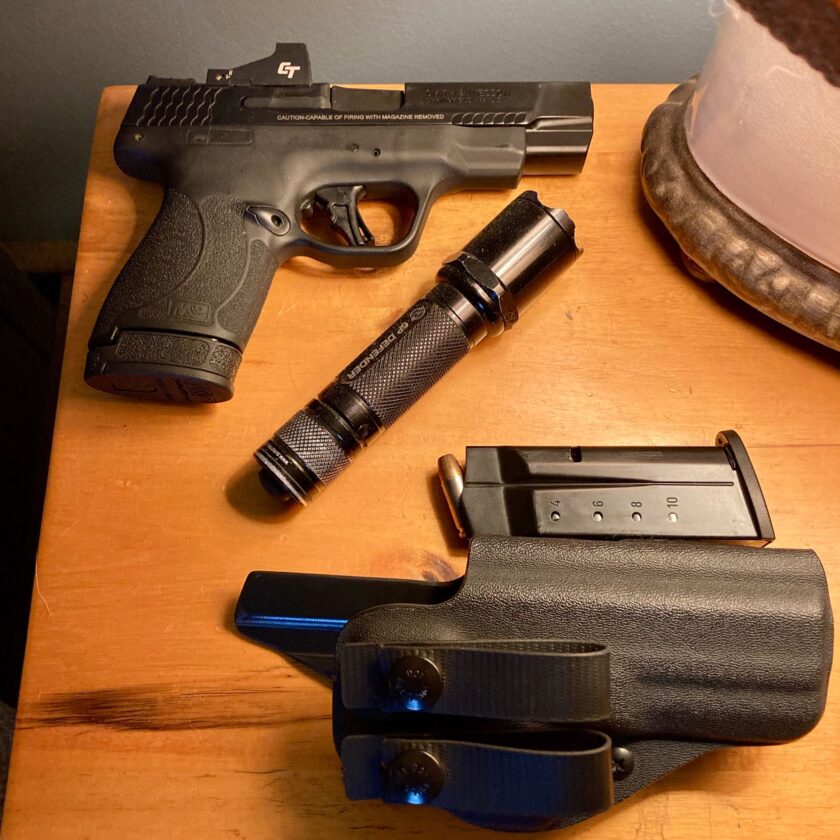
Personally I found it necessary to carry the M&P Shield Plus with the 10-round magazine installed. The longer magazine extended the grip enough that it printed pretty profoundly. The lower-capacity, flush-fit magazine still offers me plenty of purchase but makes concealment so much easier. When bedding down, however, the 13-rounder when into the grip and the Shield Plus went onto the nightstand. With the 13-rounder it feels like a “real” gun. When I get up in the morning the 10-rounder goes in the gun and off we go.
Conclusion
So what does this all mean and what conclusions, if any, have I reached about the M&P Shield Plus? First of all, I think this is a really, really capable pistol. The M&P Shield Plus fits into the newly-emerging class of “Do-it-All” pistols, which were started (and continue to be exemplified) by the Sig P365. With the short magazine in place it carries like a dream and shoots very well. With the longer magazine in place it handles about like a duty pistol; a little skinnier and – at least in this case – a barrel somewhere between compact and full-size. In this mode it is a really excellent shooter, a completely capable home-defender… not to repeat myself, but “Do-it-All” is the phrase that keeps coming to mind.
I was displeased with the magazine issue and the fact that this was, in practice, a 12+1 gun at most. I think that’s probably an “early adopter” issue that S&W will refine over time. In the meantime – as you would do with any potential carry gun – ensure your gun is reliable in the condition in which you intend to carry it. With that being said, the Shield Plus is a really, really cool gun. Overall it has excellent ergonomics, it shoots phenomenally well, and it is a great carry package, even with some enhancements like a longer slide and a RDO.
If you’re just getting into concealed carry, or considering upgrading from your older Gen 1 or 2.0 Shield, you owe it to at least consider the new Shield Plus. Though I might sound a little tepid on it, as I told you I would in the beginning, I’ve been totally honest. And my totally honest opinion here: the Shield Plus is a worthy contender.






